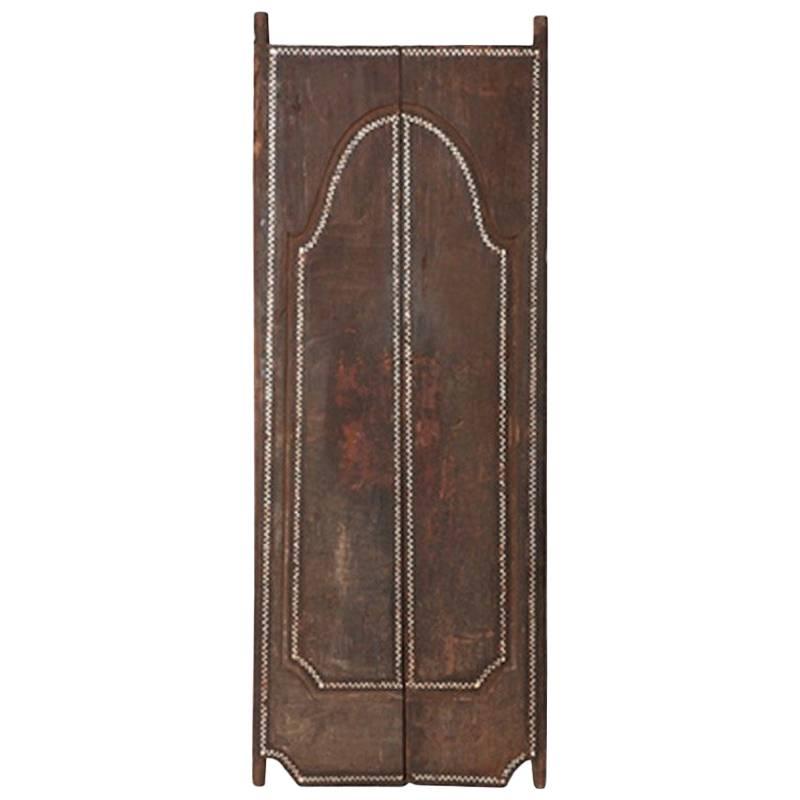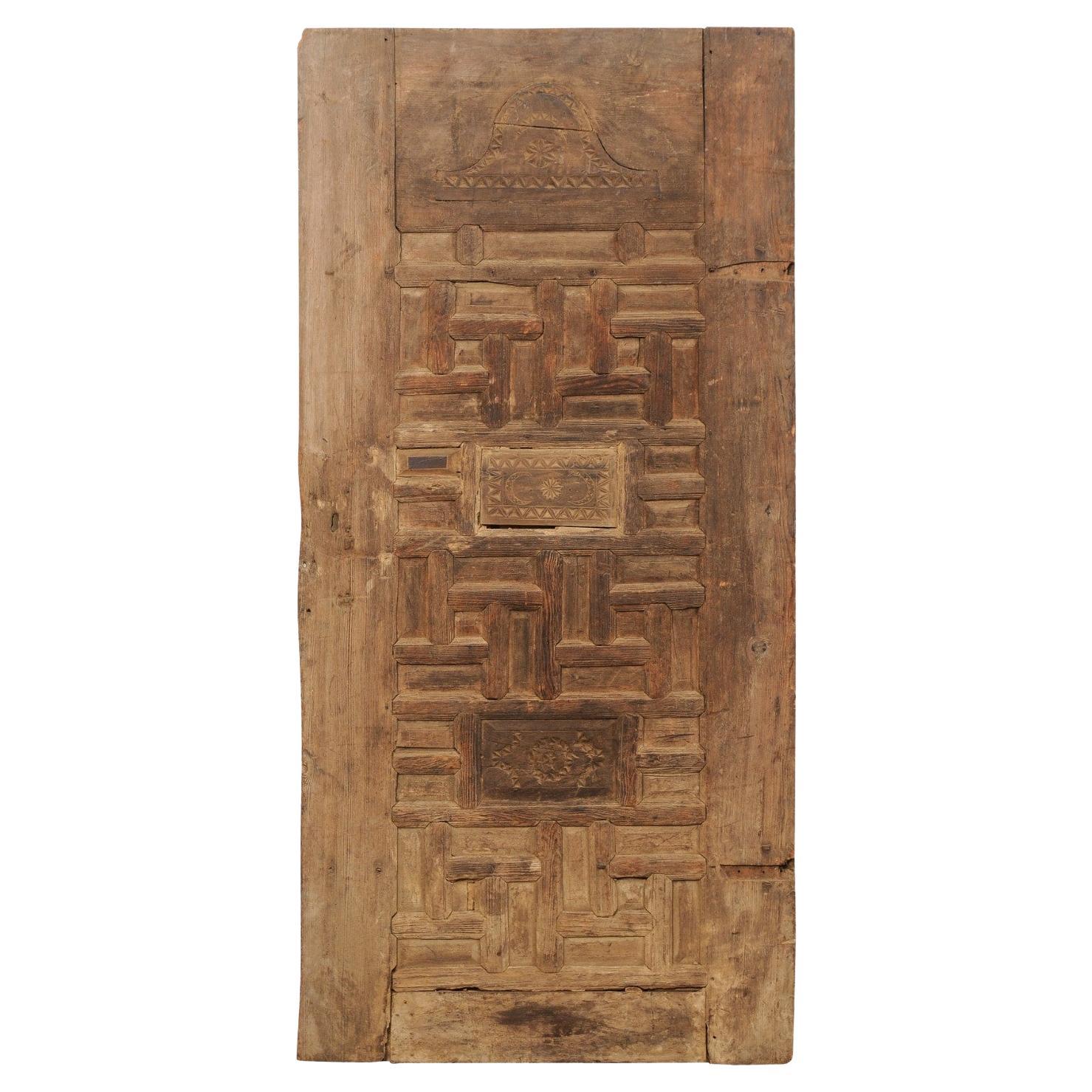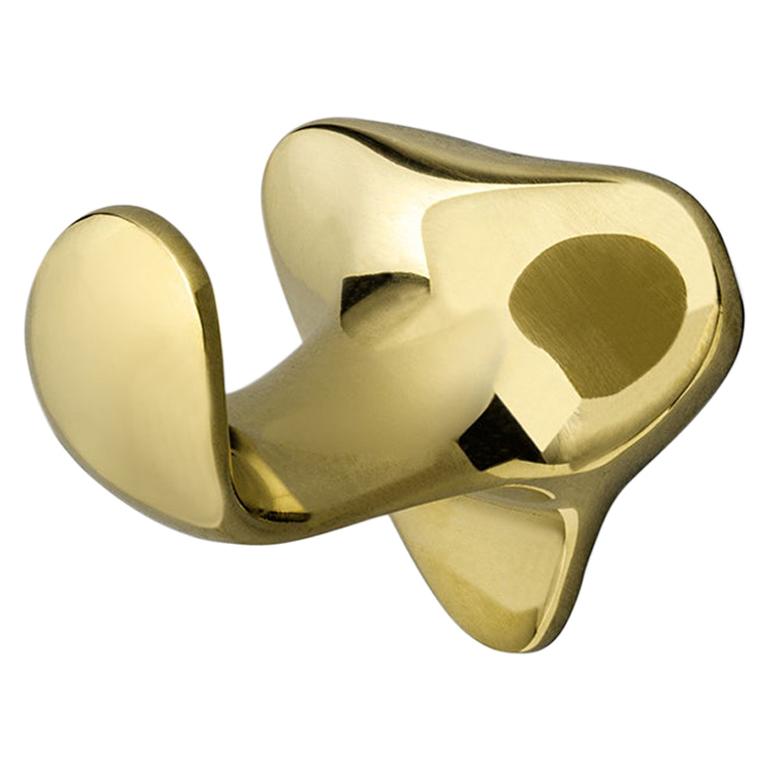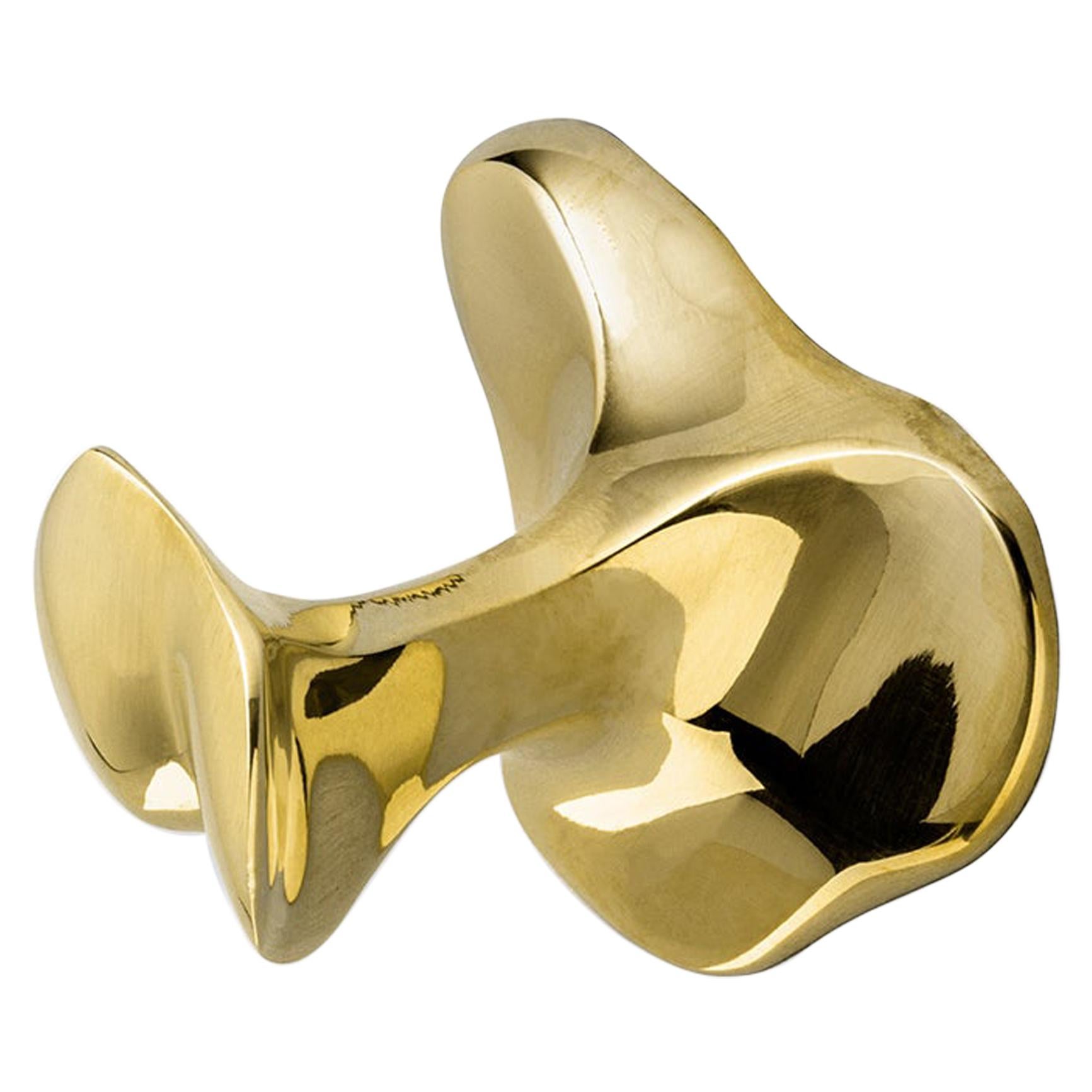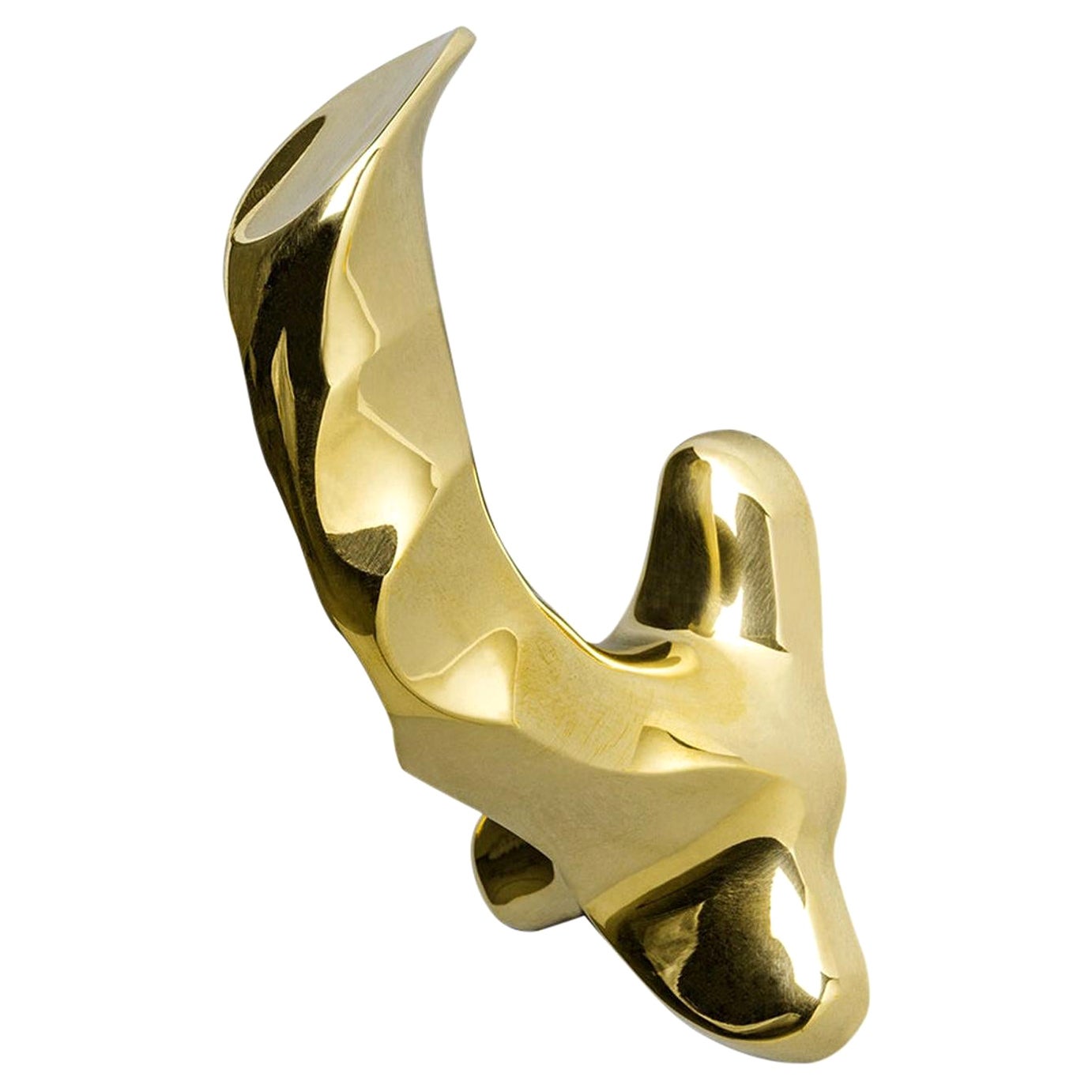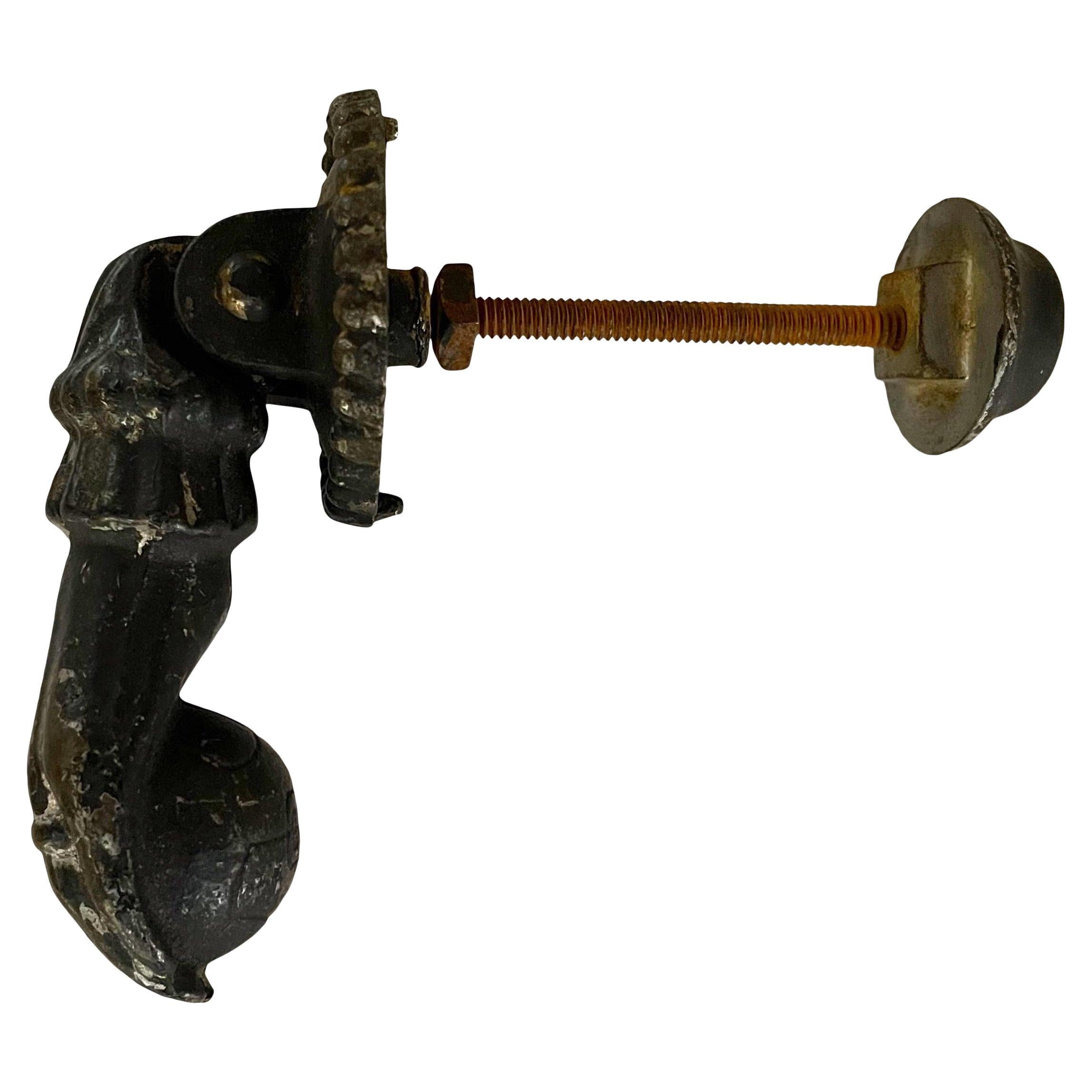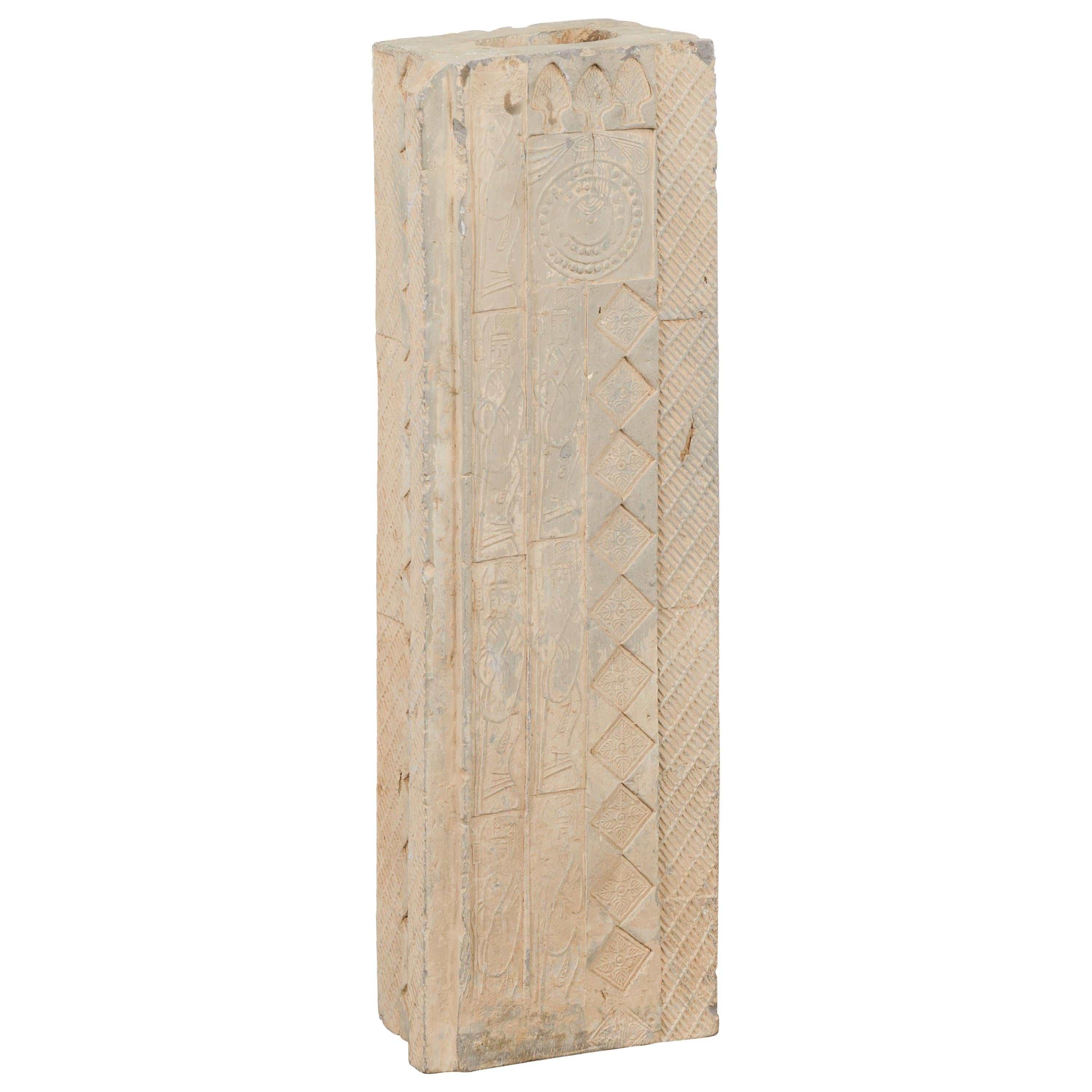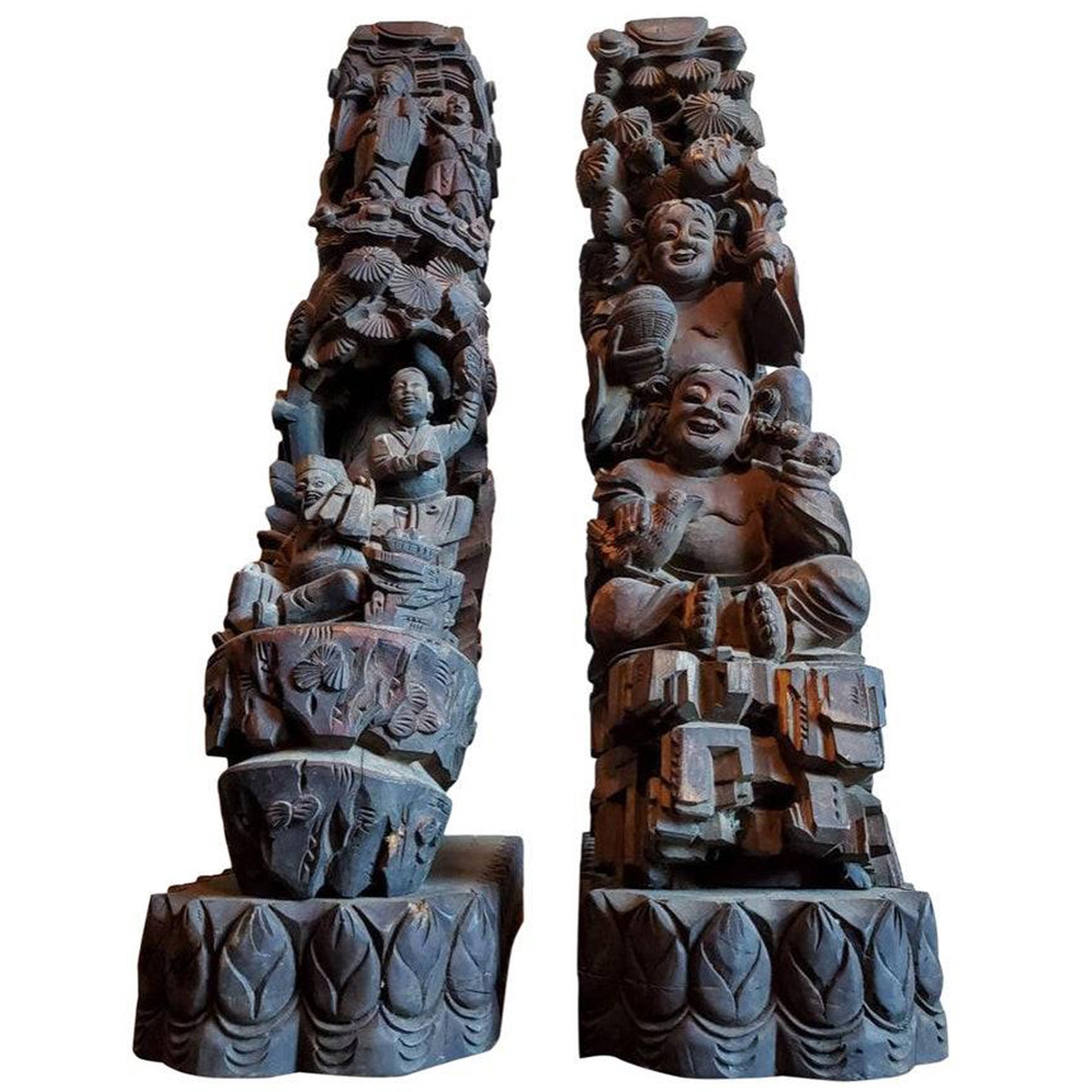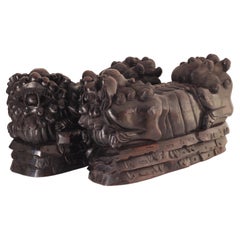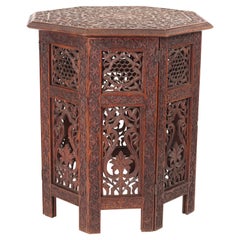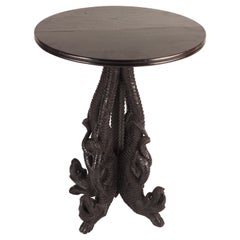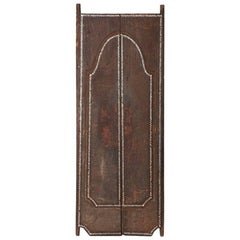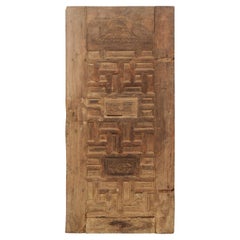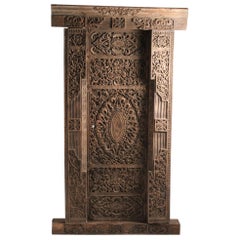
19th Century Hand Carved Balinese Temple Door
View Similar Items
Want more images or videos?
Request additional images or videos from the seller
1 of 19
19th Century Hand Carved Balinese Temple Door
About the Item
- Dimensions:Height: 79.14 in (201 cm)Width: 45.67 in (116 cm)Depth: 7.68 in (19.5 cm)
- Style:Other (Of the Period)
- Materials and Techniques:
- Place of Origin:Bali
- Period:
- Date of Manufacture:19th Century
- Condition:Wear consistent with age and use. Minor losses. Minor structural damages. Minor fading. Bali Door Width Lintel 116cm Base Width 115cm Height 201cm Depth 19.5cm Door size width 59cm Ht 176cm x depth 4.5cm.
- Seller Location:London, GB
- Reference Number:1stDibs: LU2868310858853
About the Seller
5.0
Gold Seller
These expertly vetted sellers are highly rated and consistently exceed customer expectations.
Established in 2015
1stDibs seller since 2017
170 sales on 1stDibs
More From This SellerView All
- A pair of 19th Century carved Foo temple dogs or Chinese guardian LionsLocated in London, GBChinese guardian lions, or imperial guardian lions, are a traditional Chinese architectural ornament. Typically made of stone, they are also known as stone lions or shishi (石獅; shíshī). They are known in colloquial English as lion dogs or foo dogs / fu dogs. The concept, which originated and became popular in Chinese Buddhism, features a pair of highly stylized lions—often one male with a ball and one female with a cub—which were thought to protect the building from harmful spiritual influences and harmful people that might be a threat. Used in imperial Chinese palaces and tombs, the lions subsequently spread to other parts of Asia including Japan (see komainu), Korea, Philippines, Tibet, Thailand, Myanmar, Vietnam, Sri Lanka, Nepal, Cambodia, Laos, and Malaysia. There has been extensive interaction between Chinese mythology and Confucianism, Taoism, and Buddhism. Elements of pre-Han dynasty mythology such as those in Classic of Mountains and Seas were adapted into these belief systems as they developed (in the case of Taoism), or were assimilated into Chinese culture (in the case of Buddhism). Elements from the teachings and beliefs of these systems became incorporated into Chinese mythology. For example, the Taoist belief of a spiritual Paradise became incorporated into mythology as the place where immortals and deities used to dwell. Sometimes mythological and religious ideas have become widespread across China's many regions and diverse ethnic societies. In other cases, beliefs are more limited to certain social groups, for example, the veneration of white stones by the Qiang. One mythological theme that has a long history and many variations involves a shamanic world view, for example in the cases of Mongolian shamanism among the Mongols, Hmong shamanism among the Miao people, and the shamanic beliefs of the Qing dynasty from 1643 to 1912, derived from the Manchus. Politically, mythology was often used to legitimize the dynasties of China, with the founding house of a dynasty claiming a divine descent. Mythology and philosophy. Further information: Chinese philosophy True mythology is distinguished from philosophical treatises and theories. Elaborations on the Wu Xing are not really part of mythology, although belief in five elements could appear. The Hundred Schools of Thought is a phrase suggesting the diversity of philosophical thought that developed during the Warring States of China. Then, and subsequently, philosophical movements had a complicated relationship with mythology. However, as far as they influence or are influenced by mythology, divides the philosophical camps into two rough halves, a Liberal group and a Conservative group. The liberal group being associated with the idea of individuality and change, for example as seen in the mythology of divination in China, such as the mythology of the dragon horse that delivered the eight bagua diagrams to Fu Xi, and methods of individual empowerment as seen in the Yi Jing (Book of Changes). The Liberal tendency is towards individual freedom, Daoism, and Nature. The relationship of the Conservative philosophies to mythology is seen in the legendary Nine Tripod Cauldrons, mythology about the emperors and central bureaucratic governance, Confucianism, written histories, ceremonial observances, subordination of the individual to the social groups of family and state, and a fixation on stability and enduring institutions. The distinction between the Liberal and Conservative is very general, but important in Chinese thought. Contradictions can be found in the details, however these are often traditional, such as the embrace by Confucius of the philosophical aspects of the Yi Jing, and the back-and-forth about the Mandate of Heaven wherein one dynasty ends and another begins based according to accounts (some of heavily mythological) where the Way of Heaven results in change, but then a new ethical stable dynasty becomes established. Examples of this include the stories of Yi Yin, Tang of Shang and Jie of Xia or the similar fantastic stories around Duke of Zhou and King Zhou of Shang. Mythology exists in relationship with other aspects of society and culture, such as ritual. Various rituals are explained by mythology. For example, the ritual burning of mortuary banknotes (Hell Money), lighting fireworks, and so on. A good example of the relationship of Chinese mythology and ritual is the Yubu, also known as the Steps or Paces of Yu. During the course of his activities in controlling the Great Flood, Yu was supposed to have so fatigued himself that he lost all the hair from his legs and developed a serious limp. Daoist practitioners sometimes incorporate a curiously choreographed pedal locomotion into various rituals. Mythology and practice, one explains the other: in these rituals, the sacred time of Yu merges with the sacral practice of the present. Various ideas about the nature of the earth, the universe, and their relationship to each other have historically existed as either a background or a focus of mythologies. One typical view is of a square earth separated from a round sky by sky pillars (mountains, trees, or undefined). Above the sky is the realm of Heaven, often viewed of as a vast area, with many inhabitants. Often the heavenly inhabitants are thought to be of an "as above so below" nature, their lives and social arrangements being parallel to those on earth, with a hierarchical government run by a supreme emperor, many palaces and lesser dwellings, a vast bureaucracy of many functions, clerks, guards, and servants. Below was a vast under ground land, also known as Diyu, Yellow Springs, Hell, and other terms. As time progressed, the idea of an underground land in which the souls of the departed were punished for their misdeeds during life became explicit, related to developments in Daoism and Buddhism. The underground world also came to be conceived of as inhabited by a vast bureaucracy, with kings, judges, torturers, conductors of souls, minor bureaucrats, recording secretaries, similar to the structure of society in the Middle Kingdom (earthly China). Chinese temple Dogs...Category
Antique 1860s Chinese Chinese Export Sculptures and Carvings
MaterialsHardwood
- Boho Chic style 19th Century Hand Carved Wooden Moorish Octagonal TableLocated in London, GBAntique Ottoman side table made around the end of the 19th century from Northern Africa. An ornately carved geometric design with delicate Bone flowers in the Style of the Ottomans. ...Category
Antique 1890s North African Moorish Side Tables
MaterialsWood
- Boho Chic Style Anglo-Indian Carved Dragons Rosewood Centre Table, 19th CenturyLocated in London, GBExtensively carved and detailed 19th Century Anglo-Indian Rosewood table. Four dragons form the stem and the feet of the table. We believe the to...Category
Antique 1850s British Indian Ocean Territory Anglo-Indian Center Tables
MaterialsRosewood, Hardwood
- Hand forged Victorian gothic revival fire screen/spark guard late 19th CenturyLocated in London, GBDiscover the exquisite craftsmanship of our late 19th-century hand-forged and fire-welded Victorian Gothic Revival fire screen. This stunning piece features intricate scrollwork and ...Category
Antique 1890s English Gothic Revival Fireplaces and Mantels
MaterialsMetal, Steel
- A large English 19th Century Dairy Bowl from The CotswoldsLocated in London, GBThis wonderful over sized 19th Century Dairy Bowl was found in the darkest depths of The historic Cotswolds in England. A Hand made Dairy Bowl that we procured from a traditional che...Category
Antique 1890s English Country Decorative Bowls
MaterialsTerracotta, Pottery
- Mahogany Victorian 19th Century Minature or Apprentice Piece Crib/CottLocated in London, GBPeople like to use the term ‘apprentice pieces’ when referring to small pieces of miniature furniture,but more often than not this isn’t the case. But what is an apprentice piece and why are they often confused with miniatures? Here we aim to answer these questions! The majority of miniature furniture are in fact sample pieces used by travelling salesmen. Workshops would send out salesmen on lengthy country-wide tours, with a miniature of each piece on his sales cart. This meant the cabinet maker could use the smaller form to show off his skills, without the salesman having to carry a full size piece of furniture wherever he went. Using exactly the same skills and techniques as used on the full sized pieces, the miniatures offered a way of potential buyers being able to get a feel of the quality of goods the workshop produced, before committing to a purchase. Better than a flat ink drawing in a catalogue. A much smaller number of these miniatures are termed ‘apprentice pieces’. Apprentice pieces, although again a scaled down version of the workshops’ offerings, were made by an often inexperienced apprentice. They were given lesser quality materials to work with and the craftsmanship was often less refined. Antique miniature furniture...Category
Antique 1870s English Victorian Models and Miniatures
MaterialsMahogany
You May Also Like
- Andrianna Shamaris Teak Wood Temple Door with Shell InlayLocated in New York, NYAndrianna Shamaris temple doors in teak wood. We added the shell inlay by hand for that special finish. Great as a headboard or accent piece. Can also be used as a tabletop. We curre...Category
20th Century Primitive Doors and Gates
MaterialsShell, Wood, Teak, Reclaimed Wood
- Turkish 6+ Ft Tall Hand-Carved Wooden Door, 19th CenturyLocated in Atlanta, GAA single Turkish decoratively carved wooden door from the 19th century. This antique door from Turkey has a rustically decorated front side which has been ornately adorn in a carved geometric design, with a larger and two smaller panels that have hand-carved embellishments in moon and star motifs. The door is shorter than a standard door height, as it is just over 6 feet tall. The wood has a lovely old patina, with areas of wood loss and wear, which beautifully showcases its rich history and prior use. As with any of our antique doors, we strongly advise that you consult with your contractor or architect to discuss the necessary measurements and hardware to make this piece work for your project. This 19th century Turkish carved-wood door would be a great option for a custom cabinet or pantry door...Category
Antique 19th Century Turkish Doors and Gates
MaterialsWood
- French 19th Century Carved Paneled DoorLocated in Hopewell, NJThis early French door from the 1800s or before is beautifully paneled. Stunning as a door or focal point in a room! #6130Category
Antique Early 1900s French Doors and Gates
MaterialsWood
- Door Handle model "Calvet" by Antoni Gaudi Polished Solid Brass 20th CenturyBy Antoni GaudíLocated in Barcelona, ESBefore reissuing Gaudí’s furniture, BD, together with the architect David Ferrer, faithfully reproduced some of the metalwork pieces designed by Gaudí between 1902 and 1910 for Casa ...Category
21st Century and Contemporary Spanish Art Nouveau Doors and Gates
MaterialsBrass
- Door knob mdoel "Milà no.4" by Antoni Polished Brass Gaudi 20th Century DesignBy Antoni GaudíLocated in Barcelona, ESSolid cast brass with polished finish. Antoni Gaudí (1852 - 1926) is among the most internationally famous Spanish architects, his unorthodox approach is still considered ground-bre...Category
21st Century and Contemporary Spanish Art Nouveau Doors and Gates
MaterialsBrass
- 20th Century Door Knob model "Milà no.3" by Antoni Gaudi Polished Solid BrassBy Antoni GaudíLocated in Barcelona, ESSolid cast brass with polished finish. A company that has always attributed such great importance to the author of the designs could never forget the great figures in history. That is why the BD catalogue of contemporary creations has always included those by admired classical masters. Antoni Gaudí (1852/1926) is, without doubt, the most internationally well-known Spanish architect. But is not only his buildings and brilliant architectural solutions that have travelled the globe. His integrated conception of architecture led him to pay attention, not only to structural calculations, but also to all the decorative elements, including furniture, that would form part of the building. The admiration felt by modern designers for the furniture designed by Gaudí has not gone unnoticed by BD which was the first company to rescue them from history by embarking on their serial production using...Category
21st Century and Contemporary Spanish Art Nouveau Doors and Gates
MaterialsBrass
